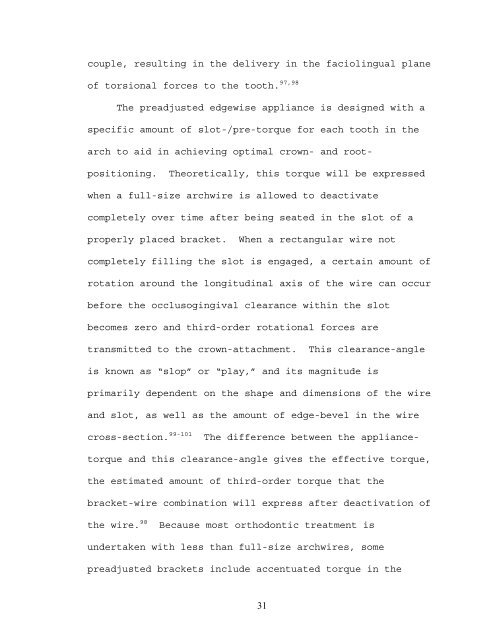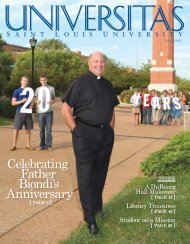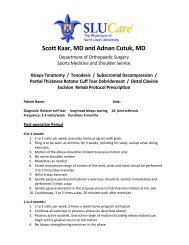The effects of third-order torque and self - Saint Louis University
The effects of third-order torque and self - Saint Louis University
The effects of third-order torque and self - Saint Louis University
You also want an ePaper? Increase the reach of your titles
YUMPU automatically turns print PDFs into web optimized ePapers that Google loves.
couple, resulting in the delivery in the faciolingual plane<br />
<strong>of</strong> torsional forces to the tooth. 97,98<br />
<strong>The</strong> preadjusted edgewise appliance is designed with a<br />
specific amount <strong>of</strong> slot-/pre-<strong>torque</strong> for each tooth in the<br />
arch to aid in achieving optimal crown- <strong>and</strong> root-<br />
positioning. <strong>The</strong>oretically, this <strong>torque</strong> will be expressed<br />
when a full-size archwire is allowed to deactivate<br />
completely over time after being seated in the slot <strong>of</strong> a<br />
properly placed bracket. When a rectangular wire not<br />
completely filling the slot is engaged, a certain amount <strong>of</strong><br />
rotation around the longitudinal axis <strong>of</strong> the wire can occur<br />
before the occlusogingival clearance within the slot<br />
becomes zero <strong>and</strong> <strong>third</strong>-<strong>order</strong> rotational forces are<br />
transmitted to the crown-attachment. This clearance-angle<br />
is known as “slop” or “play,” <strong>and</strong> its magnitude is<br />
primarily dependent on the shape <strong>and</strong> dimensions <strong>of</strong> the wire<br />
<strong>and</strong> slot, as well as the amount <strong>of</strong> edge-bevel in the wire<br />
cross-section. 99-101 <strong>The</strong> difference between the appliance-<br />
<strong>torque</strong> <strong>and</strong> this clearance-angle gives the effective <strong>torque</strong>,<br />
the estimated amount <strong>of</strong> <strong>third</strong>-<strong>order</strong> <strong>torque</strong> that the<br />
bracket-wire combination will express after deactivation <strong>of</strong><br />
the wire. 98 Because most orthodontic treatment is<br />
undertaken with less than full-size archwires, some<br />
preadjusted brackets include accentuated <strong>torque</strong> in the<br />
31
















